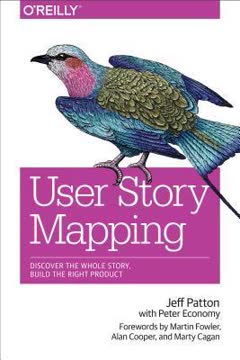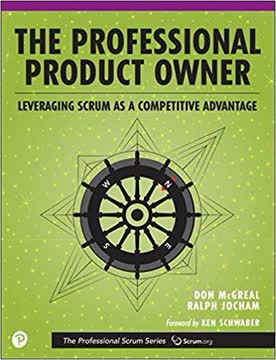Key Takeaways
1. Scrum is an empirical framework for complex product development
Scrum is a lightweight framework founded on empirical process control theory that supports small teams in addressing complex adaptive problems while productively and creatively delivering products of the highest possible value.
Empiricism is key. Scrum is based on the principles of transparency, inspection, and adaptation. It acknowledges that software development is complex and unpredictable, with many unknown variables and changing requirements. Rather than relying on detailed upfront planning, Scrum embraces an iterative approach where progress is based on observations of reality.
Framework, not methodology. Scrum provides a minimal set of rules and practices, allowing teams to incorporate other techniques and processes as needed. It consists of three roles (Product Owner, Scrum Master, Development Team), five events (Sprint, Sprint Planning, Daily Scrum, Sprint Review, Sprint Retrospective), and three artifacts (Product Backlog, Sprint Backlog, Product Increment). This lightweight structure enables teams to respond quickly to changes and deliver value frequently.
2. The Scrum Team consists of three essential roles with distinct responsibilities
The Scrum Team consists of three roles: the Product Owner, the Scrum Master, and the Development Team.
Product Owner: The entrepreneur and value maximizer. The Product Owner is responsible for defining and prioritizing the product backlog, ensuring that the team works on the most valuable features first. They act as the voice of the customer and stakeholders, making decisions about what to build and when to release.
Scrum Master: The servant-leader and process guardian. The Scrum Master helps the team understand and implement Scrum, removes impediments, and facilitates events. They coach the team in self-organization and cross-functionality, while also helping the organization adopt Agile practices.
Development Team: The creators and deliverers. The Development Team is a cross-functional group responsible for delivering a potentially releasable product increment at the end of each Sprint. They are self-organizing, deciding how to turn Product Backlog items into working software.
3. Scrum events provide regular opportunities for inspection and adaptation
Scrum events are designed specifically to provide transparency and enable business Agility.
Time-boxed structure. Scrum events have specific time limits to maintain focus and efficiency:
- Sprint: 1 month or less
- Sprint Planning: 8 hours max for 1-month Sprint
- Daily Scrum: 15 minutes
- Sprint Review: 4 hours max for 1-month Sprint
- Sprint Retrospective: 3 hours max for 1-month Sprint
Continuous improvement cycle. Each event serves a specific purpose in the Scrum framework:
- Sprint Planning: Set Sprint goal and create Sprint Backlog
- Daily Scrum: Synchronize activities and create plan for next 24 hours
- Sprint Review: Inspect the increment and adapt the Product Backlog
- Sprint Retrospective: Inspect and adapt the team's processes and interactions
4. Scrum artifacts ensure transparency and alignment within the team
Scrum artifacts are an ordered list of everything that might be needed in the product and is the single source of requirements for the product.
Product Backlog: The evolving, prioritized list of all desired product features, managed by the Product Owner. It's continuously refined and re-ordered based on new information and changing priorities.
Sprint Backlog: The set of Product Backlog items selected for the Sprint, plus a plan for delivering them. It's owned by the Development Team and updated throughout the Sprint as more is learned.
Product Increment: The sum of all completed Product Backlog items at the end of a Sprint. It must be in a useable condition and meet the team's definition of "Done".
These artifacts provide transparency about the work planned, in progress, and completed, helping the team stay aligned and make informed decisions.
5. Self-organization is a core principle that empowers Scrum teams
Self-organization enables creativity within the Scrum Teams, accountability in the Scrum Team, and people's personal commitments to achieving the goals of the Scrum Team.
Autonomy and empowerment. In Scrum, teams are given the freedom to determine how to best accomplish their work. This approach recognizes that those closest to the work are best positioned to make decisions about it.
Fostering creativity and accountability. Self-organization allows team members to leverage their diverse skills and perspectives, leading to innovative solutions. It also promotes a sense of ownership and accountability for the team's success.
Key factors promoting self-organization:
- Trust and open communication
- Time-boxing of events
- Cross-functional team composition
- Clear definition of "Done"
- Adherence to Scrum values (courage, focus, commitment, respect, openness)
6. The definition of "Done" is crucial for maintaining quality and transparency
When a Product Backlog item or an increment is described as "Done," everyone on the Scrum Team must have a shared understanding of what "Done" means, to ensure transparency.
Shared understanding. The definition of "Done" creates a common agreement on what it means for work to be complete. This ensures that everyone on the team has the same expectations for quality and completeness.
Quality assurance. A clear definition of "Done" helps maintain consistent quality across all product increments. It typically includes criteria such as:
- All acceptance criteria met
- Code reviewed and integrated
- Tests passed (unit, integration, system)
- Documentation updated
- Performance and security requirements met
Continuous improvement. The definition of "Done" should be regularly reviewed and updated as the team matures and the product evolves. This allows for progressively higher quality standards and more efficient processes.
7. Common Scrum myths and misconceptions can hinder effective implementation
Scrum knows only three roles: the Product Owner, the Scrum Master, and the Development Team.
Role confusion. One common myth is that traditional management roles (e.g., project manager, development manager) are needed in Scrum. In reality, these responsibilities are distributed among the three Scrum roles.
Other common misconceptions:
- Thinking Scrum is a methodology rather than a framework
- Believing in "Sprint 0" or "Hardening Sprints"
- Assuming Scrum doesn't allow for architecture planning
- Thinking the Product Owner can push work to the Development Team
- Believing Scrum is only for software development
Impact of misconceptions. These misunderstandings can lead to improper implementation of Scrum, reducing its effectiveness and benefits. It's crucial for organizations to properly educate themselves on Scrum principles and practices to avoid these pitfalls.
8. Scrum promotes iterative, value-based delivery through customer feedback
Scrum works not because it has three roles, five events, and three artifacts but because it adheres to the underlying Agile principles of iterative, value-based incremental delivery by frequently gathering customer feedback and embracing change.
Rapid feedback loops. Scrum's short Sprints and regular Sprint Reviews allow for frequent customer feedback, enabling teams to quickly adjust and improve the product based on real user needs and preferences.
Value-driven development. The Product Owner prioritizes the Product Backlog based on business value, ensuring that the most important features are developed first. This approach maximizes return on investment and allows for early release of valuable functionality.
Benefits of this approach:
- Faster time to market
- Increased customer satisfaction
- Reduced risk of building the wrong product
- Ability to adapt to changing market conditions
- Continuous improvement of the product
9. Architecture and design emerge progressively in Scrum development
Scrum embraces the Agile principle of emergent architecture and design.
Balancing upfront planning and emergence. Instead of extensive upfront architecture design, Scrum allows for the architecture to evolve sprint by sprint, based on the current needs and understanding of the product.
Guided by value. Architectural decisions are driven by the highest-value requirements at the top of the Product Backlog. This ensures that the architecture supports the most important features first, without over-engineering for hypothetical future needs.
Typical architectural evolution in Scrum:
- Initial Sprints: Higher focus on infrastructure and foundational architecture
- Middle Sprints: Balance between architecture and business functionality
- Later Sprints: Increased focus on business functionality, with architecture evolving as needed
This approach allows for a flexible, adaptable architecture that can respond to changing requirements and new insights gained throughout the development process.
Last updated:
Review Summary
Scrum Insights for Practitioners receives mostly positive reviews, with readers praising its clarity, practical approach, and value for both beginners and experienced practitioners. Many find it helpful for Scrum certification exam preparation. The book is commended for its simplicity, real-world examples, and complementary nature to the Scrum Guide. Some criticisms include its basis on an older Scrum Guide version and lack of visual elements. Overall, reviewers appreciate the book's insights and recommend it for those seeking to understand Scrum implementation in practice.
Similar Books










Download PDF
Download EPUB
.epub digital book format is ideal for reading ebooks on phones, tablets, and e-readers.




